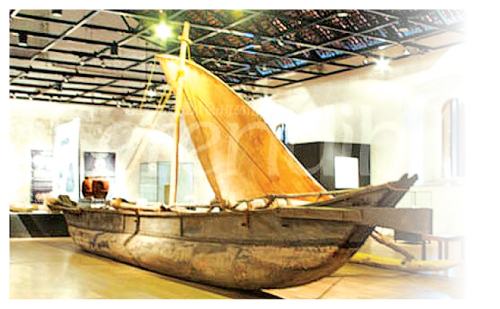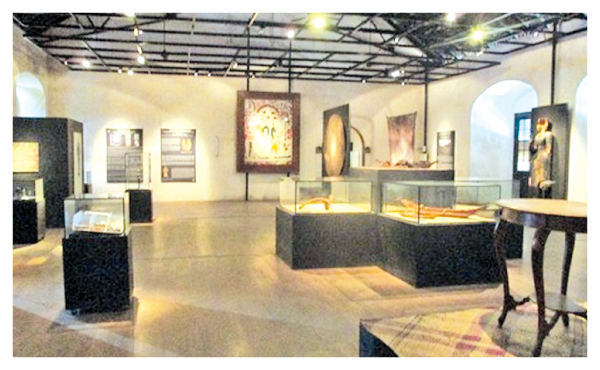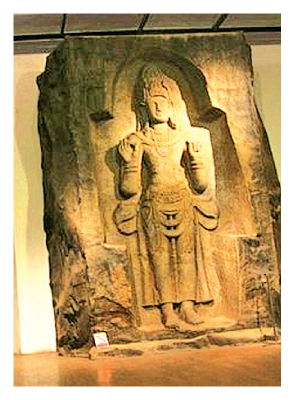National Maritime Archaeological Museum
by Husna Inayathullah
 The National Maritime Museum is within the Galle Fort. It was first
opened to the public on May 9, 1992. It is located in the Dutch East
India Company VOC Warehouse above the old gate of the Galle Fort built
in 1671. The National Maritime Museum is within the Galle Fort. It was first
opened to the public on May 9, 1992. It is located in the Dutch East
India Company VOC Warehouse above the old gate of the Galle Fort built
in 1671.
It is the only museum in Sri Lanka which provides information on
marine biology and the anthropological aspects of the Southern coastal
area. It is worth to exploring this amazing historic Warehouse building.

The numerous wrecks on display have provided great finds. Sri Lanka
was in the middle of a trade route and there are many examples of
pottery, weapons, clothing, food and drink containers and ship
maintenance store room equipment such as ropes, blocks, anchors and
maps. We can learn about the Sri Lankan fishing boats, the visiting
merchants and the colonial powers.
Exhibits of marine artefacts found in underwater explorations are
showcased in the Museum. There are maps, naval craft, ropes,
earthenware, beer mugs, smoking pipes, barrels, a vast number of
articles including artillery guns and sailor shoes. These artefacts were
recovered from ship wrecks off the Southern coast, some of which are
nearly 800 years old.
 There are exhibits on life in the oceans that surround Sri Lanka. It
covers the flora as well as the fauna. There are exhibits on different
environments such as the sea grass bed, mangrove swamps, coral beds, and
deep sea habitats. Children can enjoy leaning about the whales. There
are some dioramas on the fishing industry in Sri Lanka and the boats
that used. There are exhibits on life in the oceans that surround Sri Lanka. It
covers the flora as well as the fauna. There are exhibits on different
environments such as the sea grass bed, mangrove swamps, coral beds, and
deep sea habitats. Children can enjoy leaning about the whales. There
are some dioramas on the fishing industry in Sri Lanka and the boats
that used.
 The museum was flooded in the tsunami in 2004 but with help from the
Government of the Netherlands the museum has been restored. One can also
learn about the work of the Sri Lankan maritime archaeologist teams who
are surveying the 26 shipwrecks in the Galle Harbour. Traders have
visited Sri Lanka for thousands of years. They came from Arabia, Africa,
China and Europe. The museum was flooded in the tsunami in 2004 but with help from the
Government of the Netherlands the museum has been restored. One can also
learn about the work of the Sri Lankan maritime archaeologist teams who
are surveying the 26 shipwrecks in the Galle Harbour. Traders have
visited Sri Lanka for thousands of years. They came from Arabia, Africa,
China and Europe.
There are a number of Chinese vases on display.
There are dioramas depicting early Sri Lankan hunters. There is a
section on the occupation of Ceylon by the Dutch East India Company VOC
and the effect it had on trade.
With the arrival of the European colonial powers the museum shows the
effect on the local population who embraced the manners and dress of the
Portuguese, Dutch or British. There is also a large model of an early
European armed sailing boat. |

